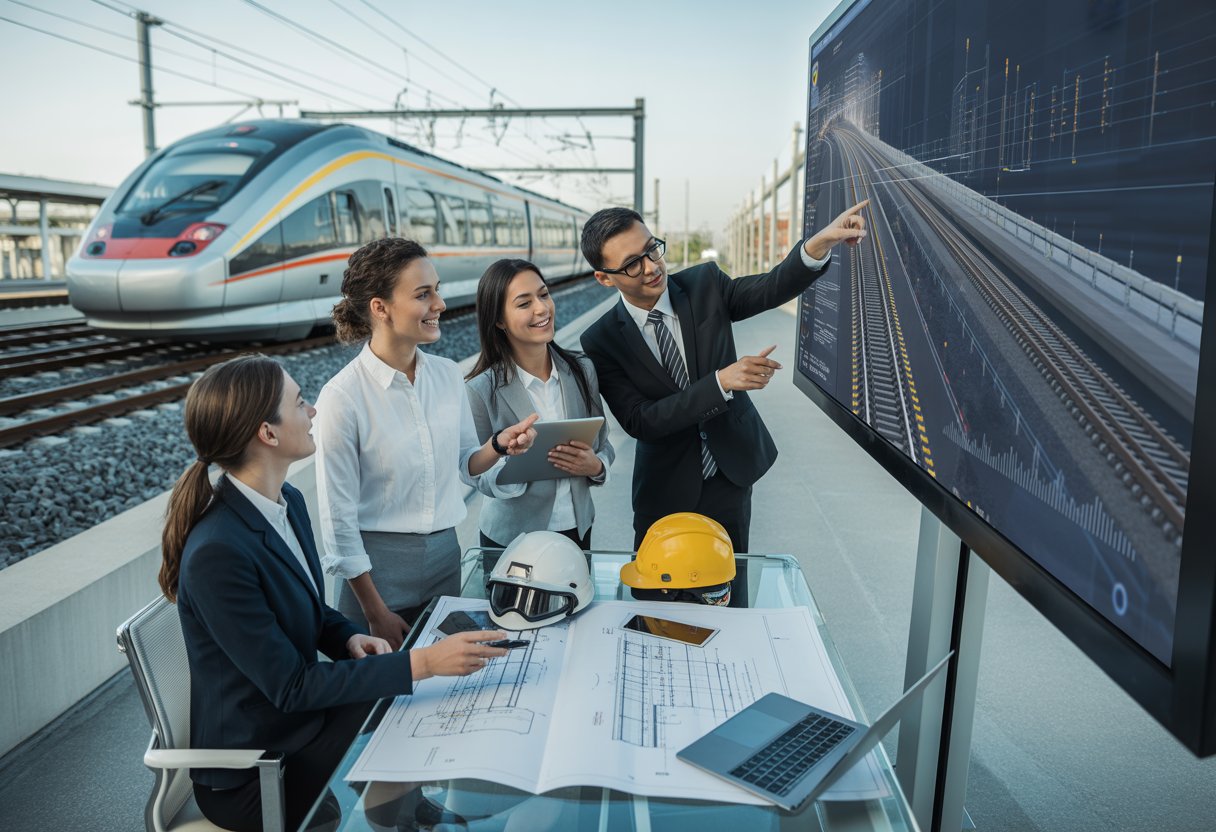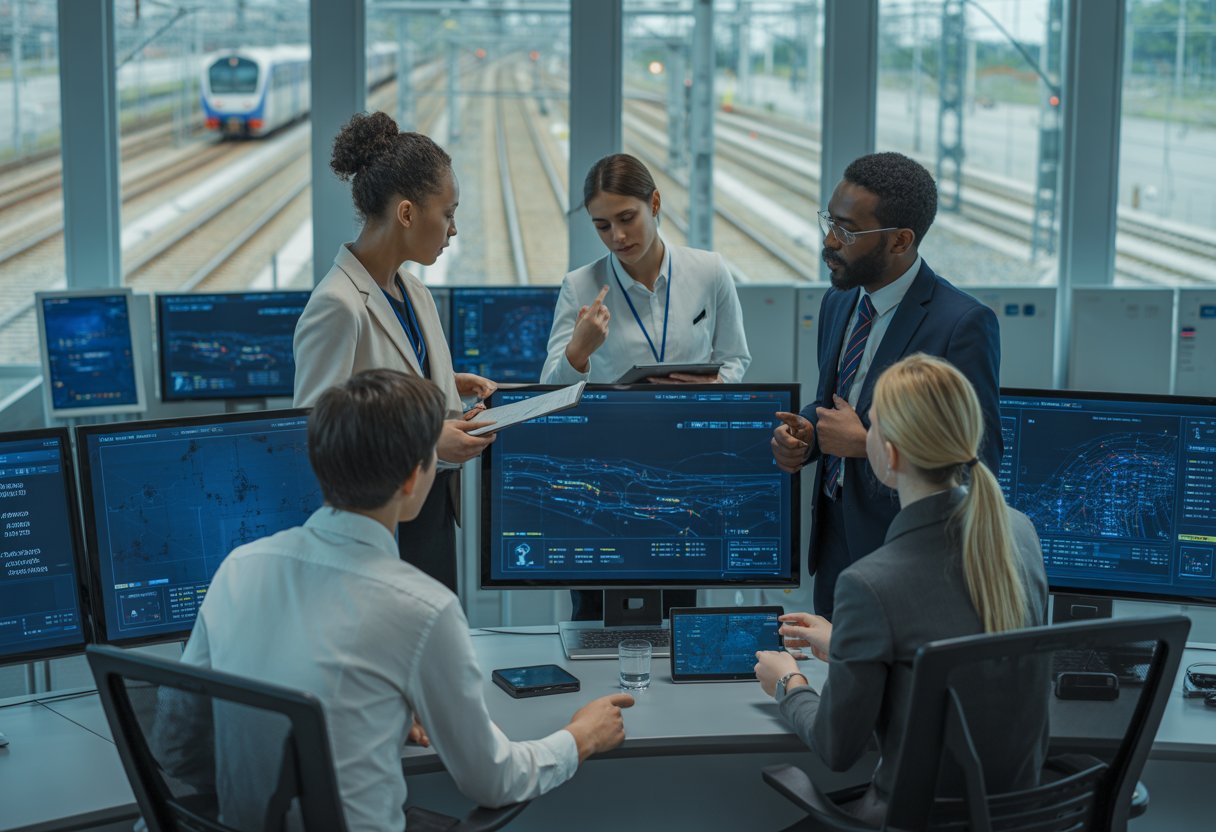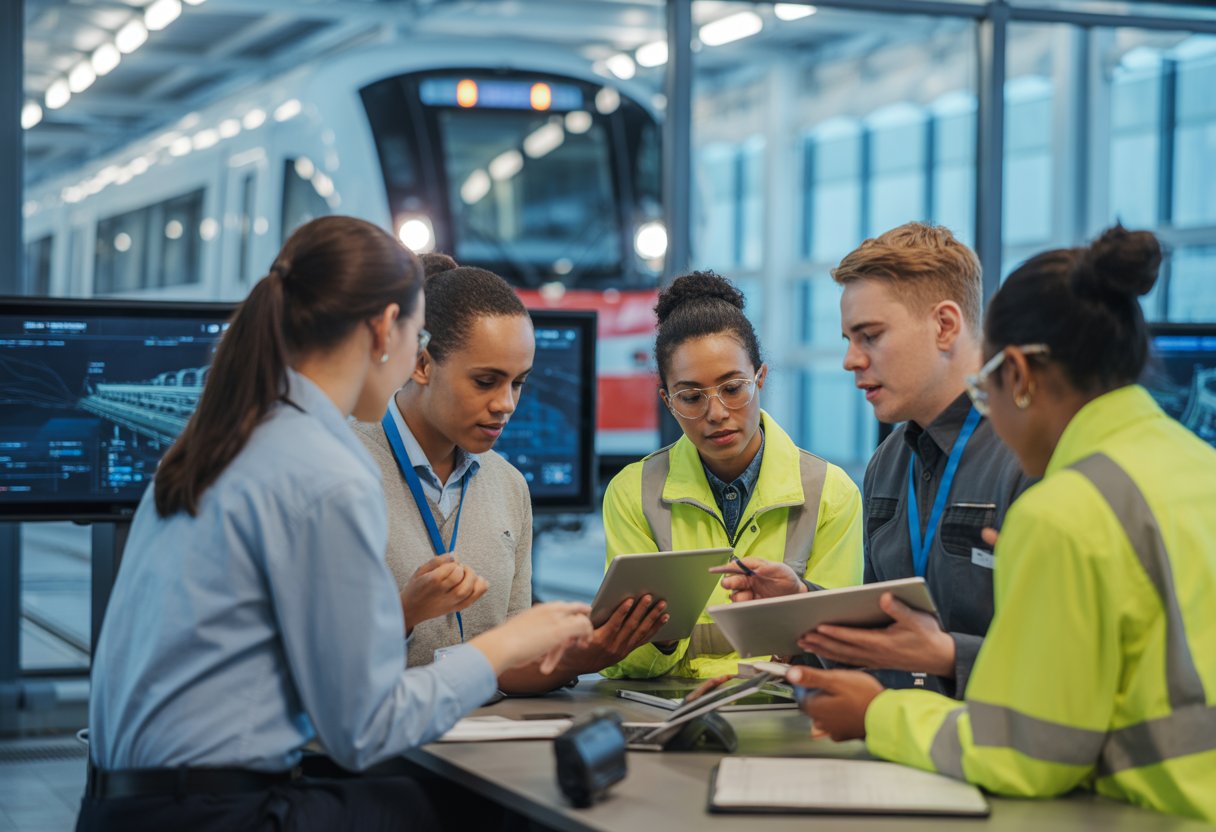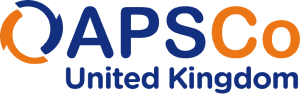Track to Talent: What Rail Infrastructure Needs from Its Next Generation of Leaders
The next generation of leaders in rail infrastructure needs strong technical skills, a solid understanding of new technologies like artificial intelligence and robotics, and an ability to adapt quickly as the industry changes. As the rail sector faces an urgent skills shortage, there is a growing need for professionals who can not only manage existing systems but also drive innovation and modernisation.

Rail operators and infrastructure organisations are looking for leaders who can bridge the gap between traditional engineering and future-focused technology. These new leaders must also be able to guide teams through digital transformation and respond effectively to new challenges, such as cybersecurity threats and workforce upskilling.
Defining the Future Leadership Needs of Rail Infrastructure

As the rail industry faces new technology, increased sustainability goals, and a changing workforce, leadership requirements are shifting. Tomorrow’s leaders need strong technical and people skills to guide teams through both growth and challenges.
Key Skills for Next Generation Leaders
Modern rail leaders must master a range of skills to keep projects on track. These include digital literacy, as systems become more automated and data-driven.
Strong communication and stakeholder management skills are vital. Leaders must explain complex issues clearly and work with diverse teams. Problem-solving and decision-making also matter, especially when safety and reliability are at risk.
The ability to manage change and encourage innovation is key. With sustainability now a top concern, leaders must understand green technologies and how to meet environmental targets. A table of crucial skills includes:
| Leadership Skill | Why It Matters |
|---|---|
| Digital literacy | Supports new tech adoption |
| Stakeholder management | Builds trust with partners and the public |
| Sustainability focus | Aids in meeting environmental requirements |
| Change management | Ensures smooth transitions in operations |
| People development | Grows future talent within the workforce |
Evolving Challenges in Rail Industry Leadership
Leaders now navigate challenges that did not exist a decade ago. The push for digital railways and automation creates the need for leaders who can guide tech transitions and maintain safety.
Demographic changes in the rail workforce also need attention. With many experienced professionals retiring, the industry faces a risk of lost expertise. New leaders must be ready to bridge this gap.
Another challenge is diversity and inclusion. The rail sector is working to attract talent from a wider range of backgrounds. Leaders have to develop inclusive cultures and encourage careers for young people, especially in technical and frontline roles.
Sustainability demands are rising. Leaders must plan for low-carbon operations and understand environmental policy. These changes make adaptability and learning essential qualities.
Building a Forward-Looking Leadership Pipeline
To meet future needs, the rail industry must rethink how it develops talent. Succession planning helps make sure important knowledge is not lost when current leaders retire or change roles.
Training now focuses on both technical skills and leadership development. Programmes like the Track to the Future initiative introduce young people to industry careers and develop their abilities early.
Mentoring and on-the-job learning remain vital. It’s important to provide pathways from entry-level roles into management. This keeps the talent pipeline strong and encourages progression.
Efforts to improve diversity are taking hold, with targeted outreach and support for underrepresented groups. The goal is a workforce that has a broad mix of skills and backgrounds, ready for the demands of modern rail infrastructure.
Emerging Technologies and Leadership Adaptation

The rail industry is entering a new era shaped by rapid advances in technology and automation. Leaders must adapt to emerging systems, improve how operations run, and create a culture where innovation drives steady progress.
Integration of Automation and Digital Systems
Rail infrastructure relies more now on automation and digital controls than ever before. Digital signalling, automatic train operation (ATO), and predictive maintenance systems are common. These tools can help trains run more safely and efficiently, reducing delays and human error.
Leaders must learn how to manage these systems and train staff to use them. This means understanding data from sensors, preparing for cybersecurity threats, and making decisions based on real-time information. Strong leadership will ensure that automation supplements, rather than replaces, the workforce’s vital skills.
Key technology examples include:
| Technology | Role in Rail |
|---|---|
| Digital Signalling | Boosts network capacity & safety |
| Predictive Maintenance | Reduces downtime & repair costs |
| Automated Train Operation | Improves punctuality & saves energy |
Harnessing Technology for Smarter Operations
Technology is helping to create smarter, more coordinated rail operations. Leaders can use digital twins—virtual copies of trains or infrastructure—to see problems before they happen. Real-time data from networks allows for quick responses to faults or weather changes.
Adopting new systems like smart ticketing improves passenger service and can make travel easier and more accessible. Leadership teams should encourage the use of tools that share information across departments and with passengers, such as mobile apps and live updates.
Key actions for leaders involve championing training, supporting collaboration between teams, and investing in technologies that offer clear benefits for efficiency and safety.
Driving Change Through Innovation
Innovation does not happen by itself—it needs active support from leadership. In an industry with tradition, leaders must create environments where staff feel safe to suggest and test new ideas. Openness to advances in artificial intelligence (AI), sustainability efforts such as energy reduction, and the use of recycled materials is now essential.
Diversity and inclusion can help teams think creatively and find new solutions to old problems. Leaders play a critical role in removing barriers and making the rail sector attractive to a wider group of talented people. Supporting pilot programmes, new partnerships, and industry-wide discussions can help spark necessary change and maintain the rail industry’s competitiveness.
Addressing the Skills Gap: Developing Rail Workforce Talent

The UK rail industry faces growing skills shortages, especially as major infrastructure projects increase demand for qualified staff. Developing talent means focusing on closing critical gaps, improving practical training, and working closely with key organisations like the National Skills Academy for Rail (NSAR).
Bridging Critical Skills Shortages
Recent research from NSAR and City & Guilds points to a sharp rise in skills gaps, with shortages expected to become “critical” by 2025. Many experienced professionals are nearing retirement, leaving a gap that new recruits are struggling to fill.
Rail projects such as upgrades and new lines require many highly skilled engineers and technicians, but the current pipeline of talent is not keeping pace. Employers are now looking for transferrable skills and attracting people from other sectors. There is a need to support mid-career switchers and focus on recruiting a more diverse workforce to widen the talent pool.
| Skills in Demand | Current Challenge |
|---|---|
| Engineering | Ageing workforce |
| Project management | Few young graduates |
| Digital technologies | Limited diversity in applicants |
Role of Training and Apprenticeships
Practical, hands-on training continues to be essential for the rail workforce. Traditional university routes alone cannot supply the levels of skill needed across all areas. Apprenticeships provide structured learning and direct experience, helping new entrants apply classroom knowledge on the job.
NSAR works with employers to develop tailored apprenticeship standards matched to real industry needs. Leading rail companies also invest in in-house academies and graduate programmes. This coordinated focus on skills boosts productivity and helps to future-proof the workforce.
Many successful rail professionals today started through these pathways, building up knowledge of safety, maintenance, and advanced railway technology gradually over time.
Collaboration with Professional Bodies
Working with recognised organisations is key to maintaining high standards. NSAR helps ensure workforce planning, training, and assessment match the latest industry requirements. They run workforce surveys and offer expert advice on future skills needs.
Rail companies often partner with bodies like the Institution of Railway Operators or Engineering Council to allow staff to gain chartered status or professional recognition. Close ties mean more consistent, up-to-date training, and keep talent development aligned with changes in rail technology and policy.
By combining industry and professional expertise, the sector builds a reliable pipeline of skilled people who can take on leadership roles in future projects.
Pathways to Social Mobility and Diversity in Rail Leadership
Building a stronger rail workforce depends on opening doors to talent from diverse backgrounds. Social mobility and inclusion can be advanced through targeted programmes, better access, and ongoing support for those who face extra challenges.
Promoting Inclusion Across All Levels
Leaders in the rail sector are working to create a culture where people from every background are welcome and able to grow. Programmes like Network Rail’s equity, diversity, and inclusion strategy set clear goals for hiring, promotion, and workplace fairness.
Some companies set up networks and forums that bring together staff from underrepresented backgrounds. These provide mentoring, career advice, and visibility for new leaders.
Key methods for fostering inclusion:
- Open recruitment and transparent promotion processes
- Training to tackle unconscious bias
- Leadership programmes for women, ethnic minorities, and those from disadvantaged areas
Inclusion is driven from the top but backed up by real, trackable actions at every level of the business.
Removing Barriers to Entry for Underrepresented Groups
Many talented individuals do not enter the rail industry because of unfair barriers. Issues include lack of information about opportunities, costs linked to training, or a perception that rail is not for people like them.
Sector initiatives such as Routes into Rail and partnerships with groups like The Talent Foundry provide resources, workplace visits, and clear advice for young people from less advantaged backgrounds.
Efforts that make recruitment more accessible include:
- Removing unnecessary qualifications from job ads
- Offering apprenticeships and internships
- Providing financial support for training and travel
By lowering these hurdles, the industry benefits from a wider pool of skilled future leaders.
Impact of Socioeconomic Mobility Initiatives
Socioeconomic mobility schemes are crucial for changing the makeup of rail leadership. Projects like Track to the Future and other Talent Foundry initiatives link students from underserved schools with real industry experiences and role models.
These programmes often include workplace visits, skill-building workshops, and long-term mentoring. The Rail Safety and Standards Board has helped fund such schemes, recognising their value to the wider workforce.
Participants in these initiatives develop project skills, gain confidence, and learn about pathways into rail careers. These efforts help ensure that senior rail roles in the future reflect the full diversity of the communities they serve.
Industry Partnerships and the Role of the Talent Foundry
Building strong partnerships is essential for bringing new skills and perspectives into the rail sector. Programmes supported by organisations like the Talent Foundry and the National Skills Academy for Rail aim to inspire and prepare the next generation for careers in rail infrastructure.
Collaborative Programmes for Youth Engagement
The rail industry faces a skills gap, especially as technology advances and experienced professionals retire. The Talent Foundry works with partners such as Network Rail and Arriva Rail London to address this issue through initiatives like Track to the Future.
These programmes are designed to reach young people from underserved backgrounds. Activities focus on real-world problem solving, teamwork, and technical skills. For example, students may take part in interactive sessions about project management or railway engineering.
The National Skills Academy for Rail also plays a role by setting standards and helping to design industry-relevant training. These collaborative efforts make rail careers more accessible and attractive, especially for those who may not have considered them before.
Mentoring and Career Development Support
Mentorship is a critical element in helping young people build confidence and understanding of the rail sector. The Talent Foundry works closely with staff from major rail organisations, who volunteer as mentors during key industry programmes.
Mentors offer insights about career pathways, daily work challenges, and needed competencies. Students benefit from guidance in both technical and soft skills—such as communication, accountability, and adaptability.
Through these sessions, participants get practical career advice and networking opportunities. The ongoing support helps them develop employability skills, increasing their chances of successfully moving into rail industry roles.
Mentoring schemes also help address barriers for groups underrepresented in the sector, including girls and young people from ethnic minorities. This targeted support is vital for creating a diverse and skilled future workforce.
Looking for a Career Change?
Check out our latest Job Listings

